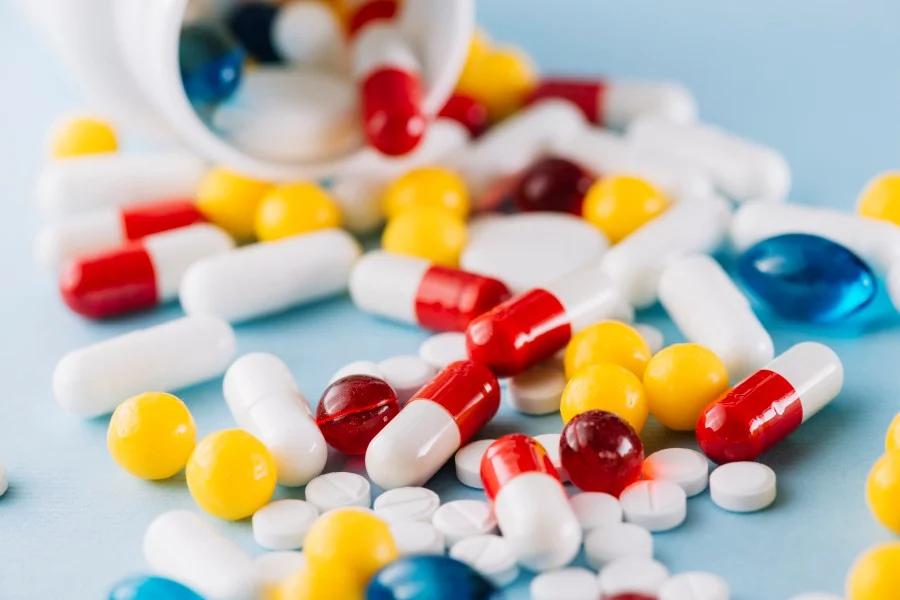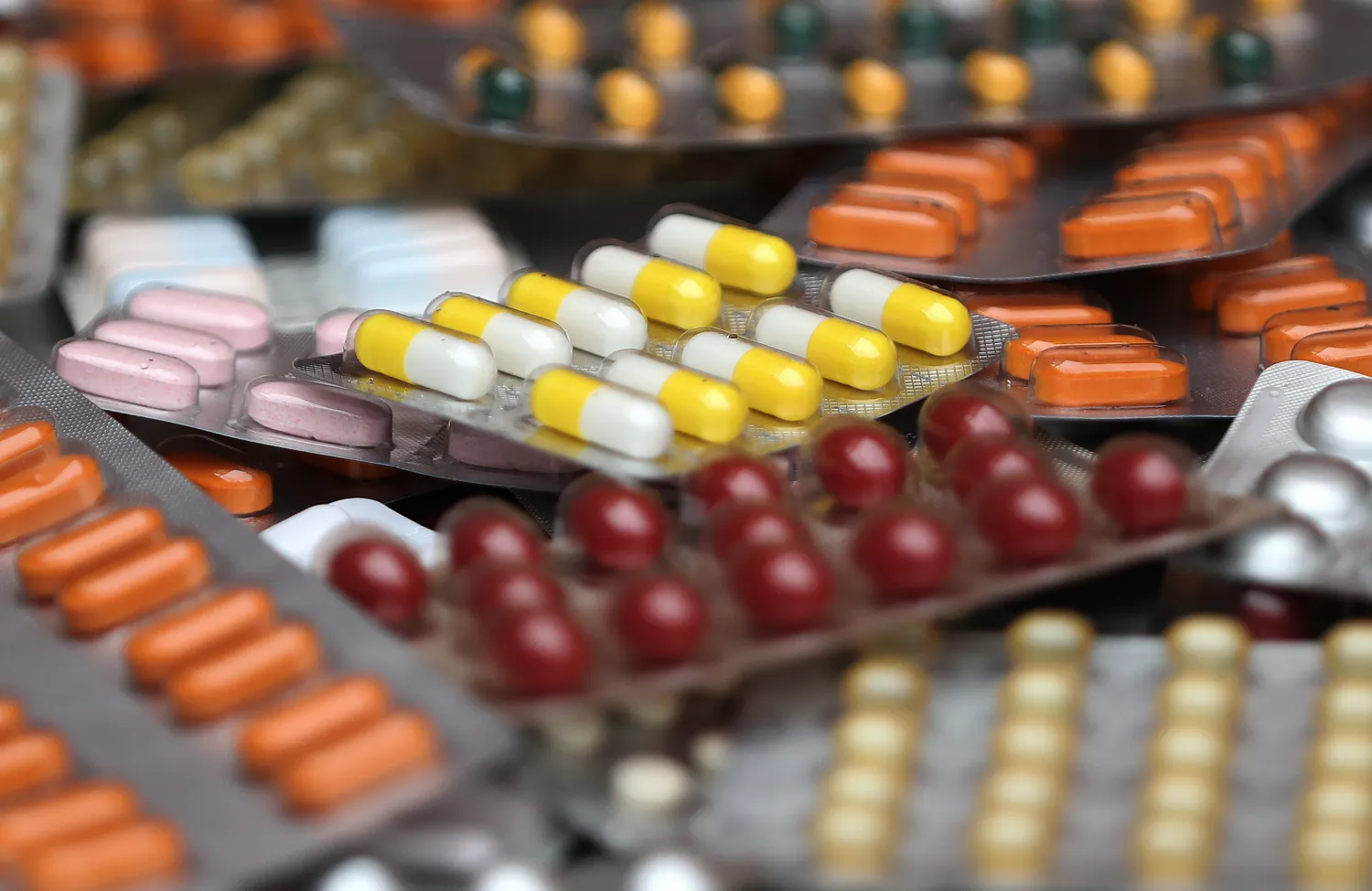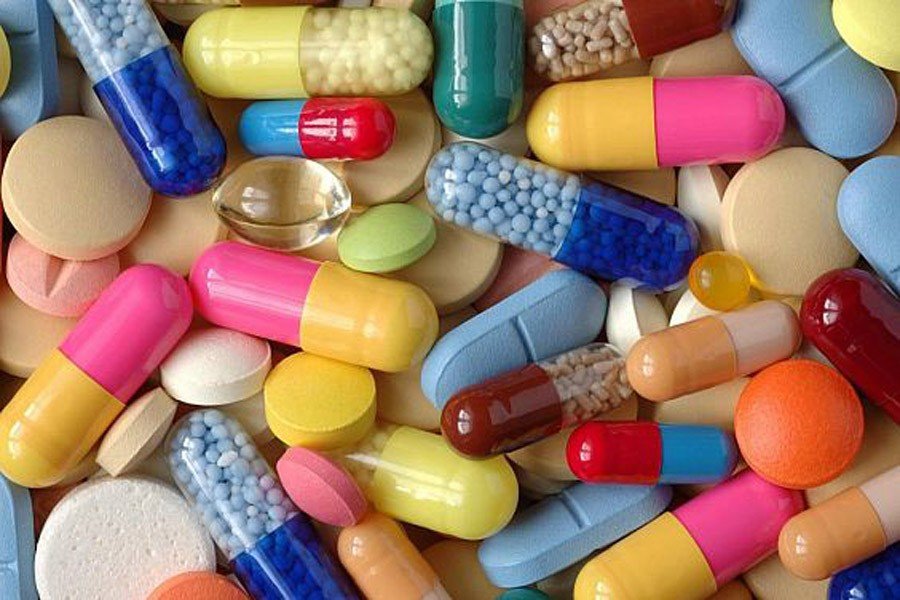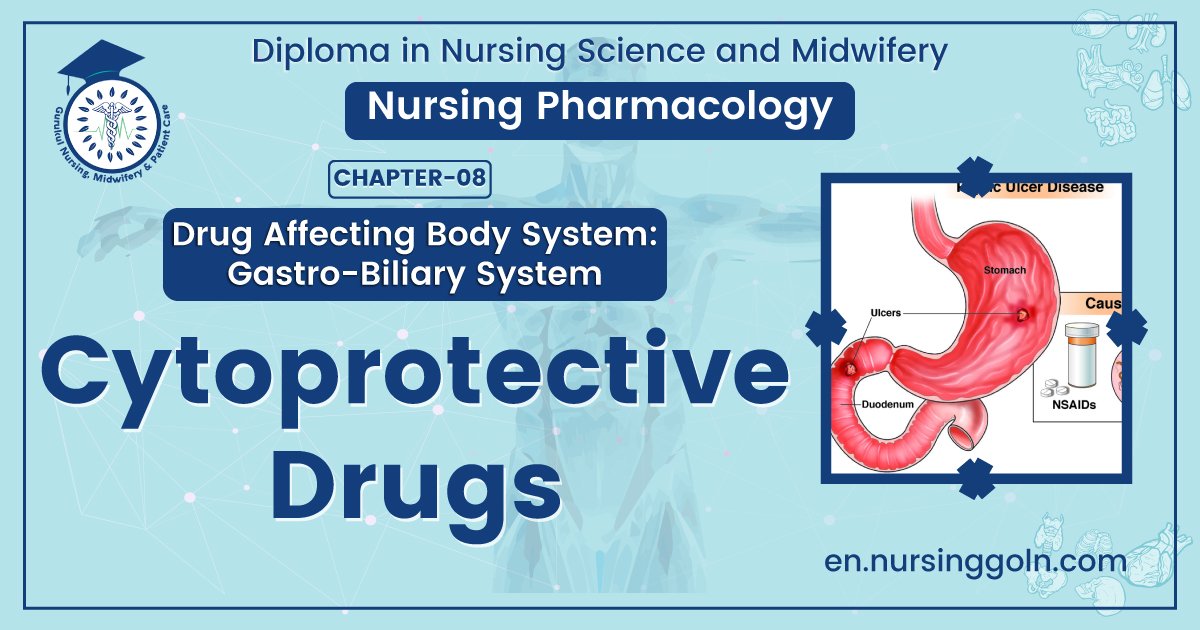Cytoprotective Drugs – This book covers the entire syllabus of “Pharmacology” prescribed by BNMC- for diploma in nursing science & midwifery students. We tried to accommodate the latest information and topics. This book is an examination setup according to the teachers’ lectures and examination questions.
At the end of the book, previous questions are given. We hope in touch with the book students’ knowledge will be upgraded and flourish. The unique way of presentation may make your reading of the book a pleasurable experience.
Cytoprotective Drugs
Cytoprotective drugs protect the gastric mucosa from acidic environment. Agents includes:
➤Bismuth chelate
➤ Sucralfate
➤ Misoprostol (PG El analogue)
Bismuth Chelate
Route of administration: Oral (tab, elixir)

Mechanism of action of Bismuth chelate
➤ Coating the ulcer and protects it from the adverse influences of acid, pepsin and bile.
➤It is bactericidal against Helicrthactor pylori. (H. Pylori may play a part in the pathogenesis of peptic ulcer).
Therapeutic efficacy: Same as H, receptor antagonist.
Healing effect: Longer than with H2 receptor antagonist
Use: Benign gastric and duodenal ulcer
Contraindication: Renal failure.
Chemistry: AI (OH)3 + sulphate sucrose – Sucralfate.
Route of administration: Oral (4 times/day before meal)
Mechanism of action Sucralfate:
1. It forms viscous paste in the acid environment of stomach (at PH 4) which adheres selectively and protectively to the base of ulcer craters.
2. It has no practical acid neutralizing capacity.
3. Only active in acid environment (not taken with antacid or H2 antagonist).
Use:
Benign ulcer. Gastritis

Sucralfate in the treatment of peptic ulcer –
1. Sucralfate is effective against both duodenal and gastric ulcers (more in duodenal ulcer).
2. Sucralfate forms viscid paste which becomes adherent to the ulcerated epithelium and thus protecting it from the acid-pepsin digestion.
3. Sucralfate also stimulates the formation of prostaglandin by gastric mucosa. Thereby exerting a cytoprotective effect.
4. The incidence and severity of side effects from sucralfate are very low.
5. After remission, continued treatment with sucralfate postpones relapse more effectively than does cimetidine.
Role of H2 blocker (Ranitidine) and sucralfate in the management of peptic ulcer disease:
| H2 BLOCKER | SUCRALFATE |
| 1. Blocks H2 receptors of parietal cells and inhibit HCI secretion. | 1. Protect ulcerated mucosa by forming a viscous paste in acid environment. |
| 2. Blocks both basal and food stimulated HCI secretion | 2. Inactivates pepsin and bile which are ulcerogenic. Effective in H. pylori resistant patients. |
| 3. Acid environment is not required for activation. | 3. Activated in acid PH. hourly. |
| 4. Dose: 150 mg (after meal) | 4. Dose: I gm 4 times/day |
Misoprostol
Misoprostol is a synthetic analogue of prostaglandin E1.
Mechanism of action of misoprostol:
1. Misoprostol (PGE1) stimulates mucus & HCO3 secretion which form unsturred gel- like layer over the mucosa and protects it from acid-pepsin digestion.
2. Increases blood flow to mucosa.
3. Prevents back diffusion of H into mucosa.
4. Enhancement of the rate of cell replication in the mucosa to hasten the repair of damaged epithelium.
5. Reduces gastric acid secretion

Clinical use
- Prevention of gastric ulcer in patients who are taking NSAIDs (aspirin).
- Healing of ulcer.
Contraindication:
Pregnancy (or going to be pregnant).
Drugs causing peptic ulceration
1. NSAIDs:
➤ Aspirin
➤ Ibuprofen
➤Naproxen
➤ Diclofenac sodium
2. Corticosteroids.
Role of antibiotics in the treatment of peptic ulcer (PUD)
Helicobactor pylori, is the bacteria which may be responsible for pathogenesis of peptic ulcer.
So, in recent anti- helicobactor is used in the treatment of peptic ulcer disease.

Anti-helicobactor agents
1. Colloidal bismuth120 mg 6 hourly 28 days.
2. Amoxacillin 150 mg 8 hourly 14 days
3. Tetracycline 500 mg 6 hourly 14 days.
4. Metronidazole400 mg 8 hourly 14 days.
Read more:
